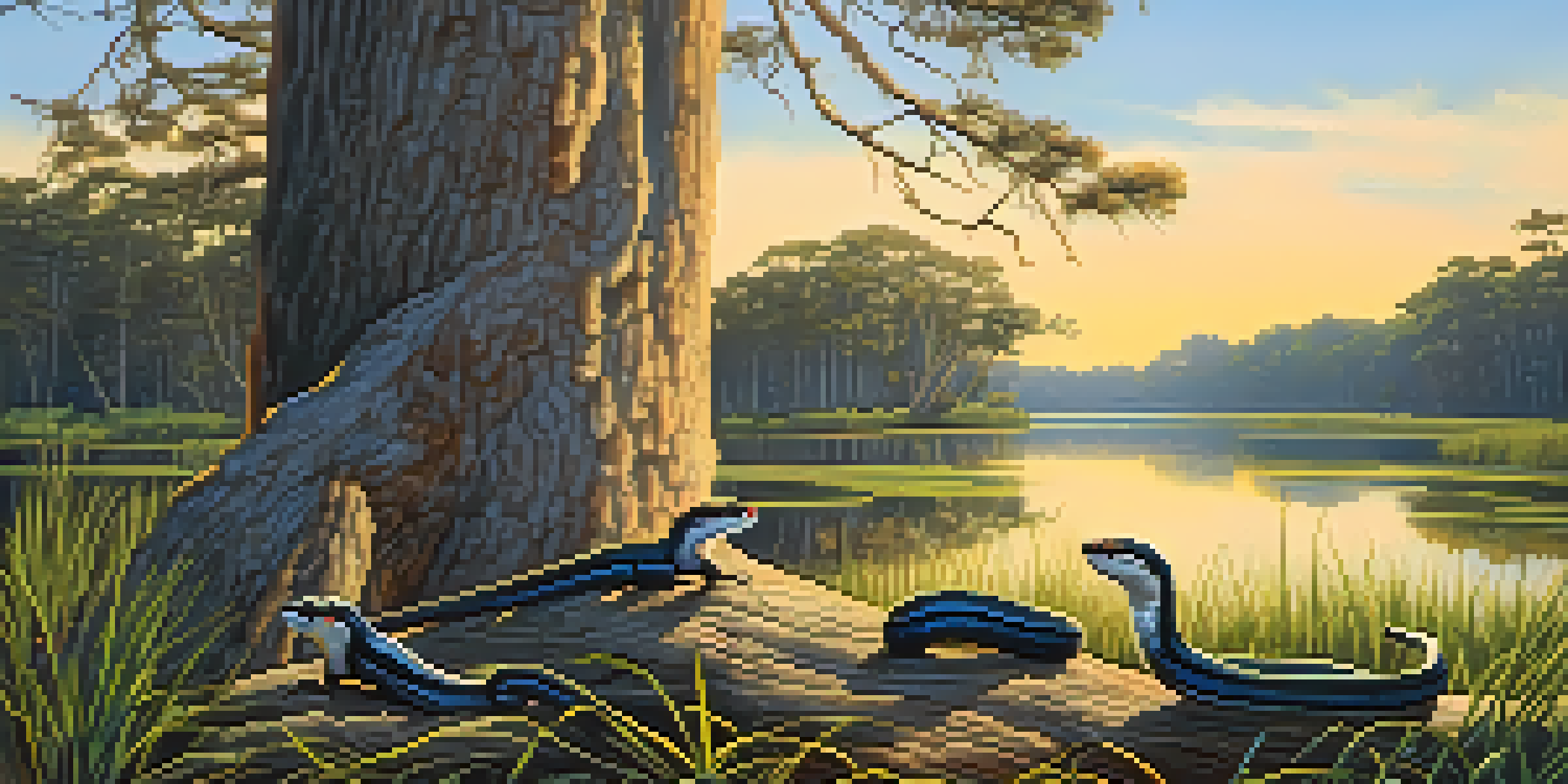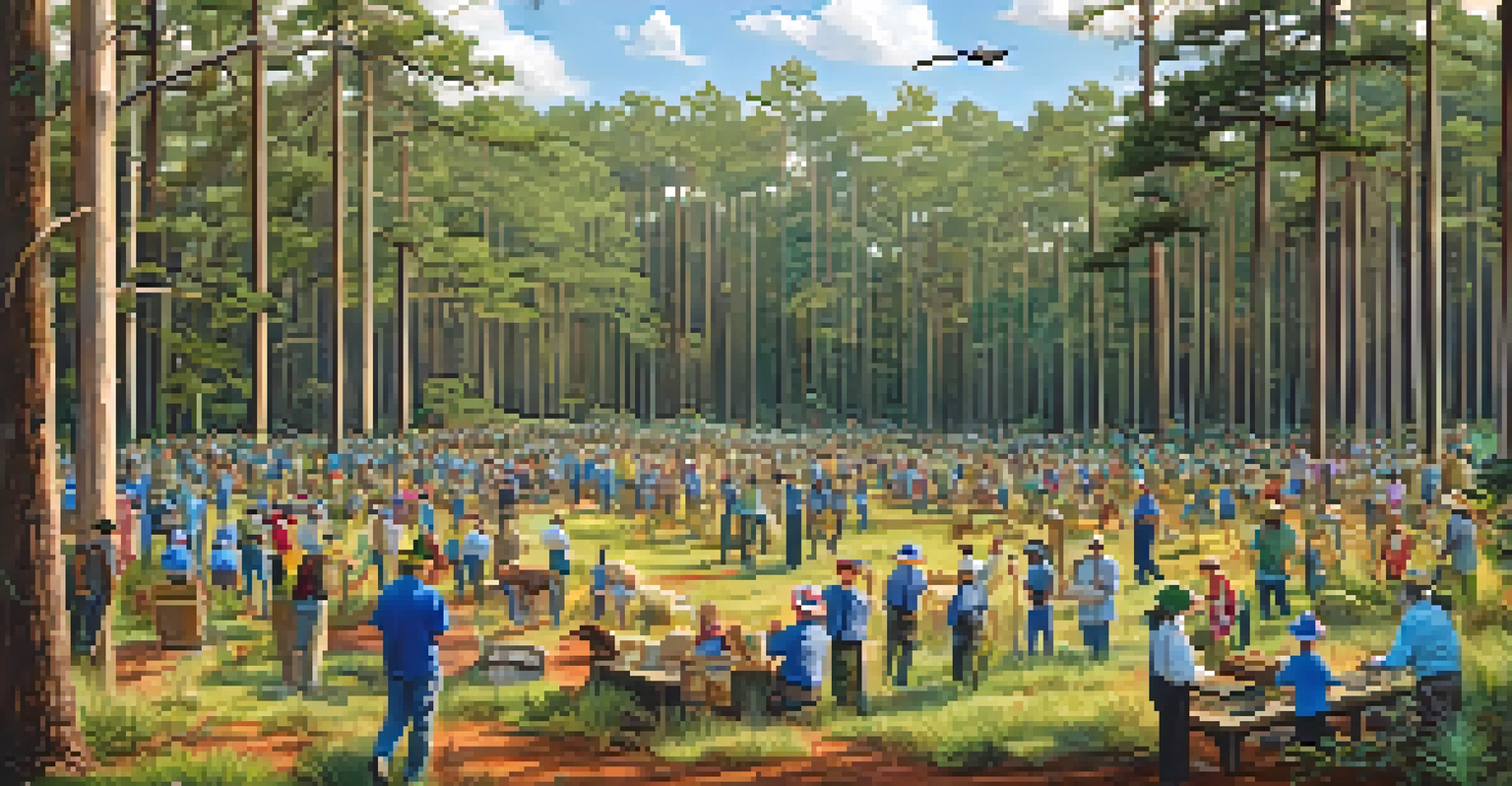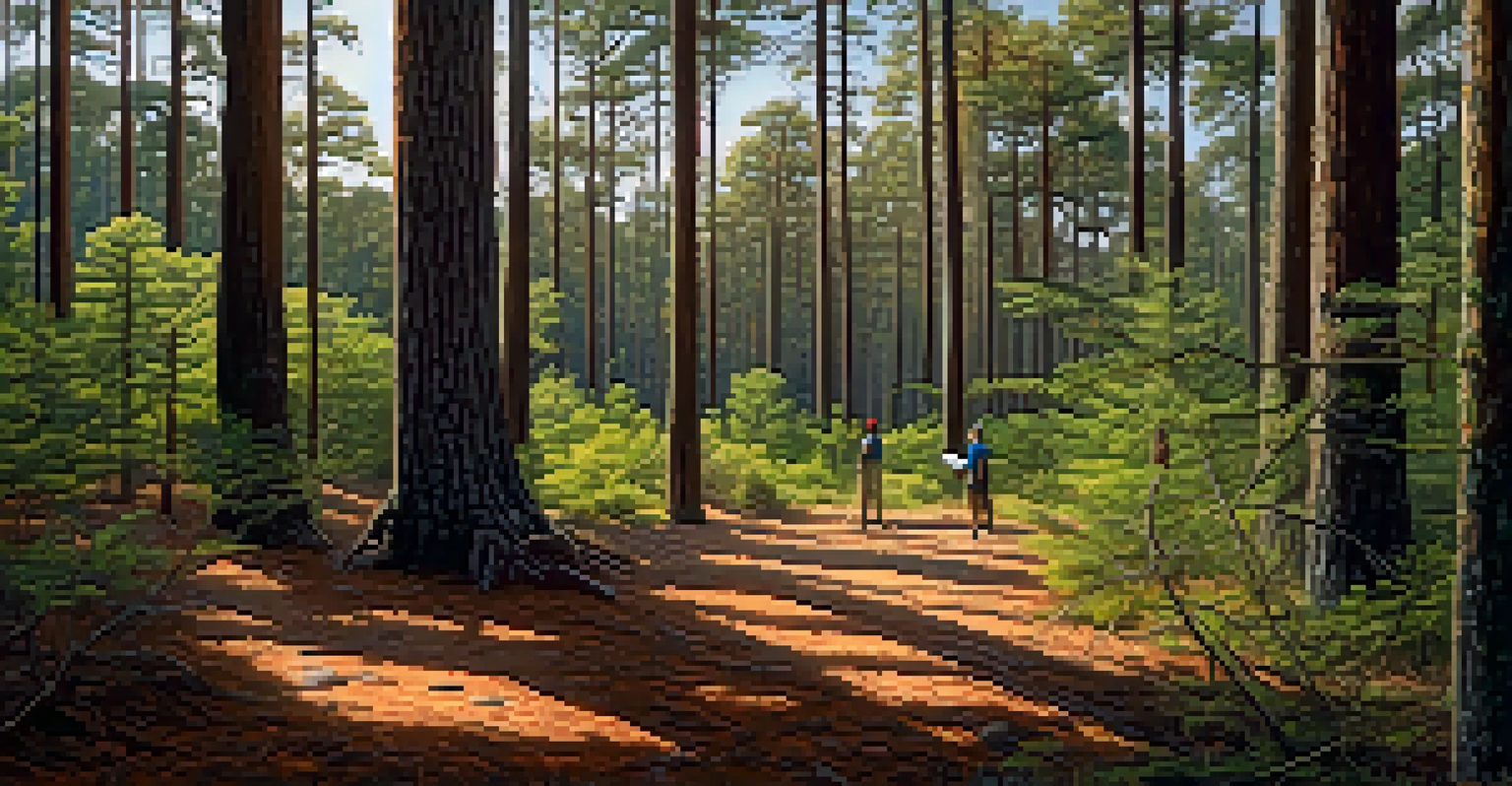Restoration Projects for Savannah's Endangered Wildlife Species

Understanding Savannah's Endangered Wildlife
Savannah, Georgia, is a vibrant ecosystem that supports a variety of wildlife. However, many of these species are facing threats due to habitat loss, pollution, and climate change. Endangered species such as the Eastern Indigo Snake and the Red-cockaded Woodpecker are struggling for survival in this changing landscape. Understanding their plight is the first step toward effective restoration efforts.
The greatest threat to our planet is the belief that someone else will save it.
These animals play crucial roles in maintaining ecological balance, making their conservation essential. For example, the Eastern Indigo Snake helps control rodent populations, while the Red-cockaded Woodpecker contributes to creating nesting sites for other birds. Without these species, the ecosystem could face significant disruptions. This highlights the importance of targeted restoration projects.
As awareness grows about the challenges these species face, local organizations and government agencies are stepping up to implement effective conservation strategies. By focusing on habitat restoration and protection, we can help ensure that Savannah's wildlife thrives for generations to come.
The Role of Habitat Restoration in Conservation
Habitat restoration is a crucial element in the fight to save endangered species. This process involves rehabilitating and revitalizing environments that have been degraded or destroyed. In Savannah, efforts are underway to restore coastal marshes, forests, and wetlands that serve as crucial habitats for many endangered species. These natural areas are not only vital for wildlife but also help protect the region from flooding and erosion.

One successful example of habitat restoration in Savannah is the re-establishment of longleaf pine forests. These ecosystems are essential for the survival of the Red-cockaded Woodpecker, which relies on old-growth trees for nesting. By planting native species and removing invasive plants, conservationists are creating a more suitable habitat for this and other endangered wildlife.
Critical Habitat Restoration Needed
Restoring Savannah's coastal marshes and longleaf pine forests is essential for the survival of endangered species like the Eastern Indigo Snake and the Red-cockaded Woodpecker.
Moreover, the restoration of these habitats has wider benefits for the community. Healthier ecosystems can enhance recreational opportunities, improve water quality, and support local economies through ecotourism. This interconnectedness of human and wildlife well-being underscores the importance of habitat restoration efforts.
Community Involvement in Wildlife Restoration
Community involvement is a cornerstone of successful wildlife restoration projects. Local residents, volunteers, and organizations often come together to participate in conservation efforts. Whether it’s planting native species, cleaning up habitats, or raising awareness, community engagement plays a vital role in the success of restoration initiatives. The more people know about these projects, the more likely they are to support them.
In every walk with nature, one receives far more than he seeks.
In Savannah, programs that educate the public about endangered species and their habitats are gaining traction. Schools, local businesses, and environmental groups often collaborate on projects that encourage community participation. These initiatives not only help with restoration but also foster a sense of stewardship among residents, creating a culture of conservation.
Moreover, community-led efforts can lead to innovative solutions tailored to local needs. By harnessing the knowledge and passion of local citizens, conservationists can develop more effective strategies that resonate with the community. This collaborative approach is essential in building long-term support for wildlife restoration projects.
Key Restoration Projects in Savannah
Several key restoration projects in Savannah are making strides toward saving endangered wildlife. One notable initiative is the Savannah Coastal Ecosystem Restoration project, which focuses on restoring tidal marshes and other coastal habitats. These efforts not only benefit endangered species but also improve water quality and provide flood protection for the surrounding communities.
Another significant project is the Longleaf Pine Restoration initiative, aimed at re-establishing longleaf pine forests. This initiative is critical for the Red-cockaded Woodpecker, as it provides necessary nesting sites and food sources. By involving local volunteers and organizations, this project has seen impressive results, showcasing the power of community involvement.
Community Engagement Drives Success
Active participation from local residents and organizations is vital for the success of wildlife restoration projects, fostering a culture of conservation.
These restoration projects highlight the importance of collaboration between government agencies, non-profits, and the community. By working together, these groups can pool resources and expertise, ensuring that restoration efforts are effective and sustainable. This collective action is vital in combating the threats faced by Savannah's endangered wildlife.
The Importance of Legislative Support
Legislative support plays a crucial role in the success of wildlife restoration initiatives. Enacting laws and policies that protect endangered species and their habitats can provide the necessary framework for effective conservation efforts. In Savannah, local and state governments have been instrumental in allocating funding and resources for various restoration projects.
For example, legislation aimed at preserving coastal habitats has helped secure funding for projects that restore marshlands and promote biodiversity. These laws not only protect the environment but also support the local economy by enhancing recreational opportunities and ecotourism. When legislation prioritizes environmental health, communities can thrive alongside wildlife.
Furthermore, advocacy for stronger conservation laws can lead to greater public awareness and engagement. As citizens become more informed about the importance of protecting endangered species, they may be inspired to participate in advocacy efforts. This cycle of awareness and action is essential for creating lasting change in wildlife conservation.
The Role of Research in Wildlife Restoration
Research is a key component of successful wildlife restoration efforts. By studying the behaviors, habitats, and populations of endangered species, scientists can develop targeted strategies for conservation. In Savannah, ongoing research projects focus on understanding the needs of local endangered species, helping inform restoration practices that are both effective and sustainable.
For instance, tracking the movements and breeding patterns of the Eastern Indigo Snake has provided valuable insights into its habitat requirements. This information is crucial for habitat restoration efforts, ensuring that the areas being restored meet the specific needs of these snakes. Research helps bridge the gap between conservation theory and practical application.
Legislation Supports Conservation Efforts
Strong legislative support is crucial for funding and implementing effective wildlife restoration initiatives, protecting both endangered species and their habitats.
Moreover, sharing research findings with the community and policymakers can foster greater support for restoration initiatives. When people understand the science behind conservation efforts, they are more likely to engage and advocate for positive change. This emphasis on research not only enhances restoration projects but also builds a stronger connection between the community and its wildlife.
Looking Ahead: Future of Wildlife Restoration in Savannah
As we look to the future, the prospects for wildlife restoration in Savannah are hopeful but require continued commitment. Ongoing collaboration among local organizations, government agencies, and community members will be essential for sustaining momentum in conservation efforts. By learning from past successes and challenges, stakeholders can develop more effective strategies for protecting endangered species.
Additionally, adapting to the challenges posed by climate change will be crucial. As environmental conditions evolve, restoration strategies may need to be adjusted to ensure they remain effective. This adaptability will help ensure that Savannah's wildlife can thrive in a changing world.

Ultimately, the future of wildlife restoration in Savannah lies in a shared vision of conservation. By fostering community involvement, supporting research efforts, and advocating for strong legislative protections, we can create a brighter future for Savannah's endangered species and the ecosystems they inhabit.